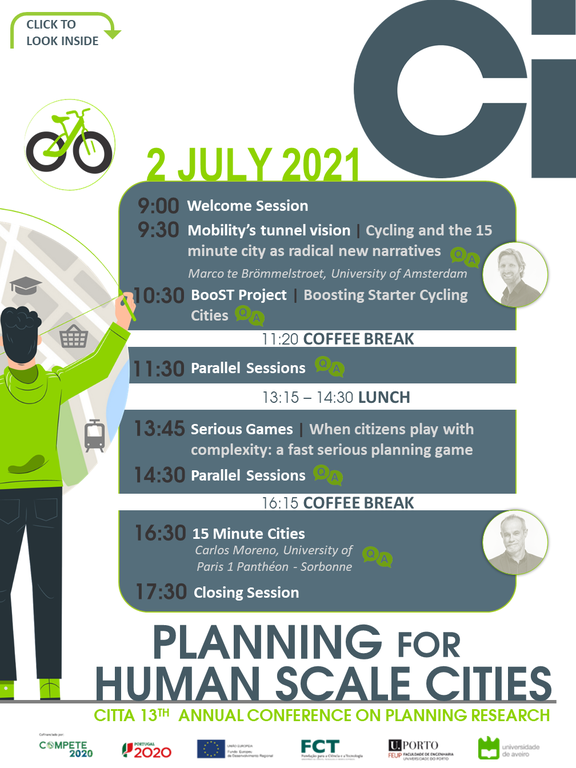Programme
The conference comprises plenary sessions and parallel thematic sessions on the following topics:
1. Planning for the Bicycle: Supporting Human Scale Cities.
Track 1 explores in detail the intricacies of this transport mode. We encourage reflexions on the role of the bicycle in the transition process to more human scale cities and what strategies can be put into place to facilitate its implementation. Reflections on how to overcome resistance typical to starter cycling contexts is encouraged.
2. Urban Form and the Environment: Human Scale Planning.
Track 2 dives into the lively dynamics of urban areas and the multitude of systems that guide its daily operation. Here, a discussion is promoted on numerous aspects of urban living, planning and design that define the urban experience.
3. Walking the Path: Urban design in Human Scale Cities.
Track 3 seeks to understand the role of urban design in the daily experience of urban areas. Special consideration will be given to the pedestrian mode and its key role for the enjoyment of the city.
4. The spatiality of Urban Settlements: The Morphology of Human Scale Cities.
Track 4 explores the large scale spatial analysis of the urban structure, exploring aspects such as urban form and morphology. A discussion is promoted on how can the history of the formation and development of urban areas guide its future planning process.
5. Transformative Planning and Well-being: Human Scale Governance Arrangements.
Track 5 aims to untangle the complex connections between urban change dynamics, transformative planning, and social well-being. It approaches urban change from multiple perspectives, considering dimensions such as economy, housing, tourism, inclusiveness, and agency, and seeks to understand how the ties between them can provide the opportunity to advance a more human scale city, emphasizing the role of governance arrangements for transformative planning.
6. Transport Engineering and Planning: Human Scale Mobility Systems.
Track 6 proposes a reflection on ongoing and future changes in transport planning and what their impacts are to human needs and space. These can include new planning support systems, modelling procedures and integration of new technologies and infrastructure configurations.

